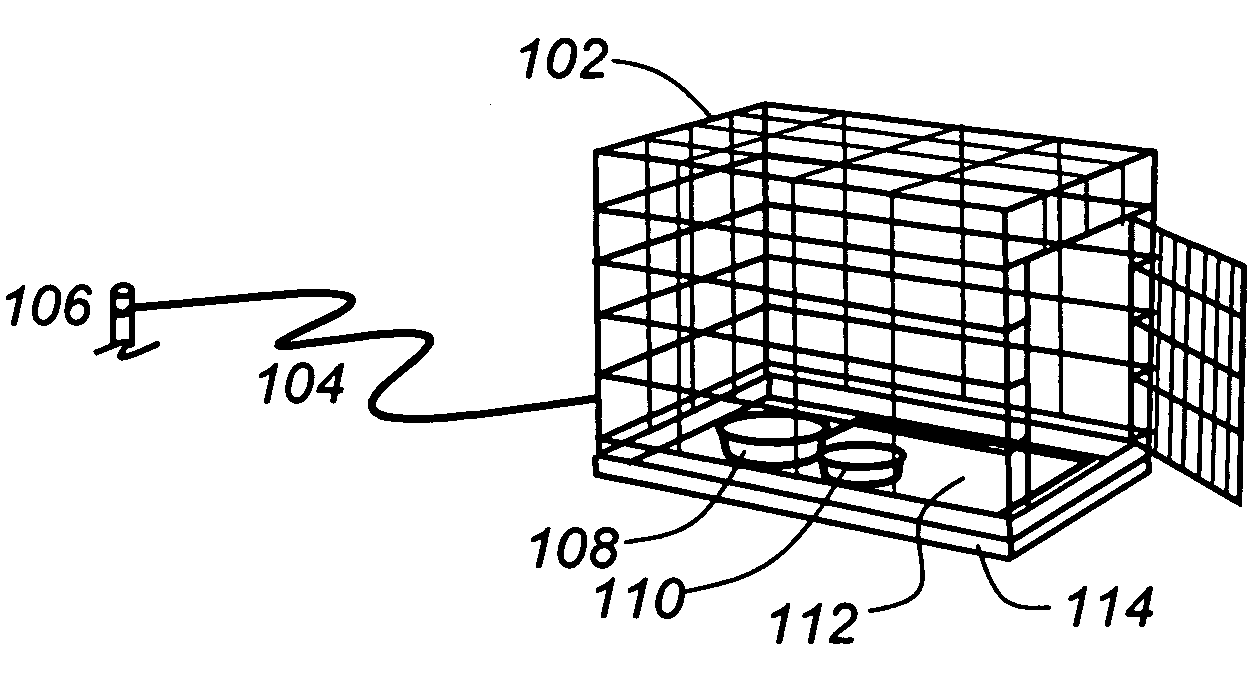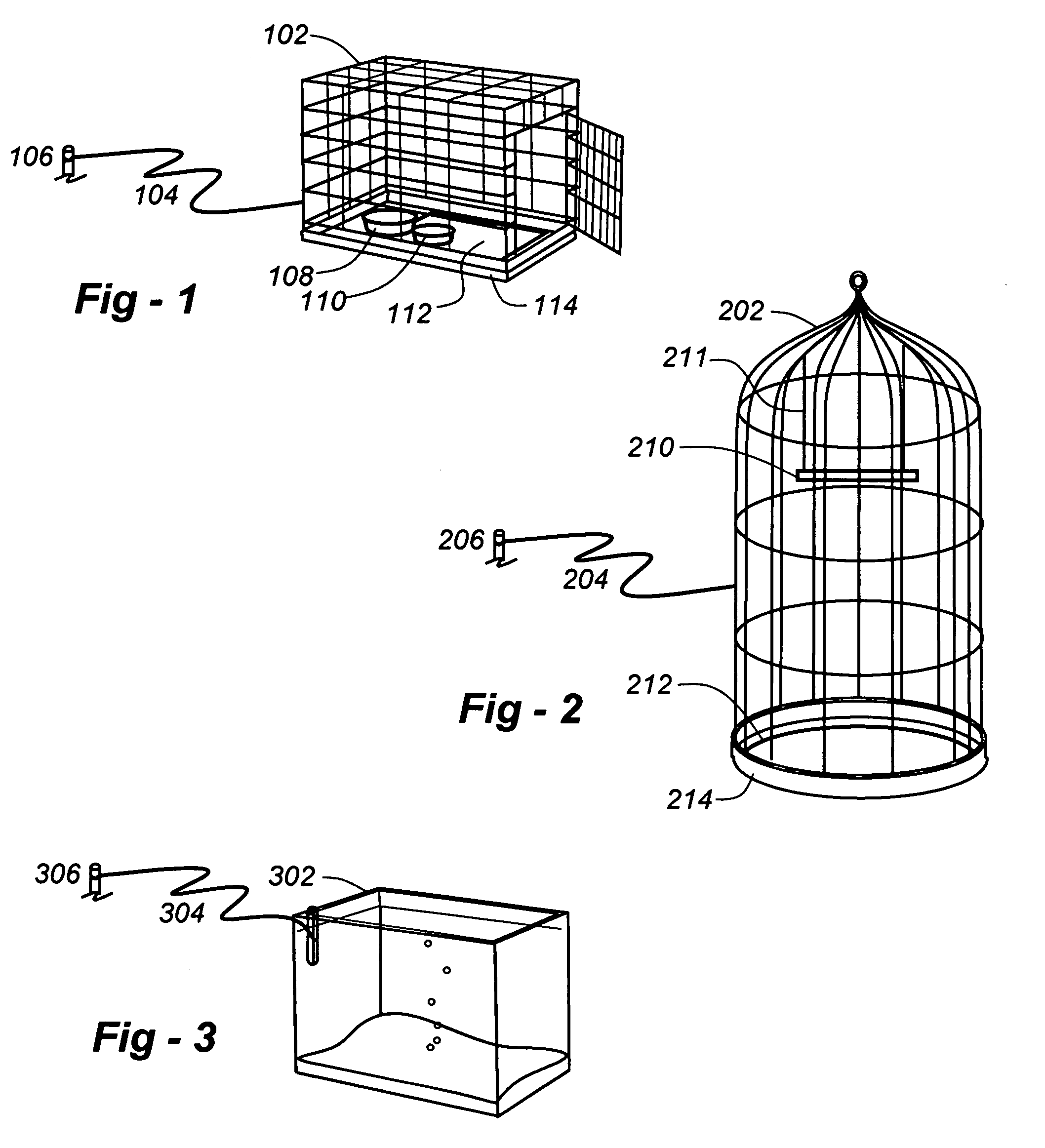Systems and methods for electrically grounding animals
a technology of electrical isolation and electrical grounding, applied in the field of electrical grounding, can solve the problems of increasing inflammation, affecting normal immune system function, and affecting the normal function of the immune system, and achieve the effect of improving inflammation and preventing the formation of new cells
- Summary
- Abstract
- Description
- Claims
- Application Information
AI Technical Summary
Benefits of technology
Problems solved by technology
Method used
Image
Examples
Embodiment Construction
[0010]All animals naturally spend their lives in electrical contact with the earth; mammals through their foot pads on the soil, fish through the conductive mineral water of the sea and lakes, and birds through the conductivity of tree bark. This conductive path provides a means to discharge any electrical field charge that might build up in the body of the animal, and there may be some reverse flow of electrons from the earth to the body.
[0011]This invention inhibits the build up of electrical charge and potential ill effects by electrically grounding animals that are kept indoors; lab-caged animals used for clinical trials, fish and other aquarium creatures, and animals that are kept indoors at night or during harsh weather, including livestock, horses, etc.
[0012]FIG. 1 is a drawing that shows the invention applied to a small animal cage. According to the invention, a ground-rod, preferably a ⅜″ dia. copper rod 106 is driven at least 1 foot into native soil, preferably somewhat mo...
PUM
 Login to View More
Login to View More Abstract
Description
Claims
Application Information
 Login to View More
Login to View More - R&D
- Intellectual Property
- Life Sciences
- Materials
- Tech Scout
- Unparalleled Data Quality
- Higher Quality Content
- 60% Fewer Hallucinations
Browse by: Latest US Patents, China's latest patents, Technical Efficacy Thesaurus, Application Domain, Technology Topic, Popular Technical Reports.
© 2025 PatSnap. All rights reserved.Legal|Privacy policy|Modern Slavery Act Transparency Statement|Sitemap|About US| Contact US: help@patsnap.com


